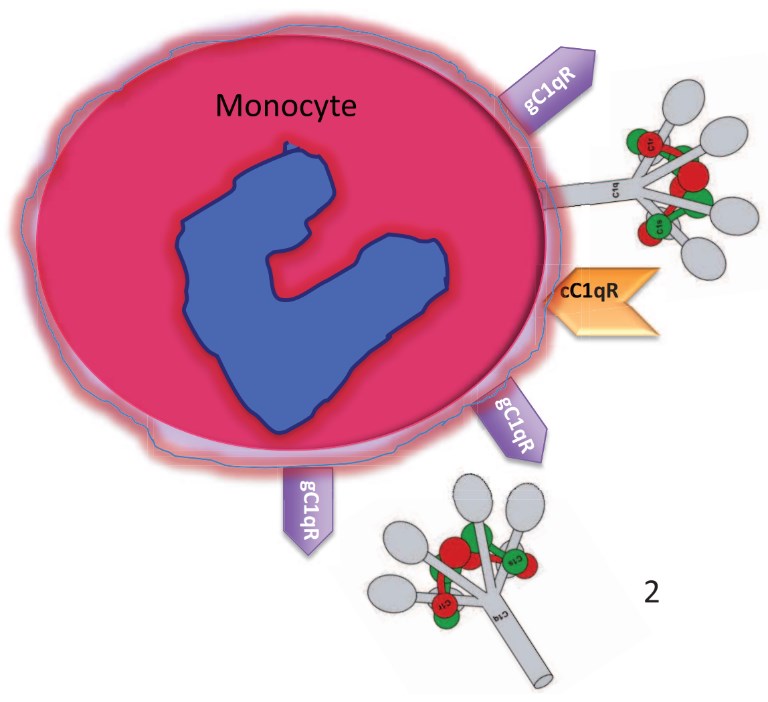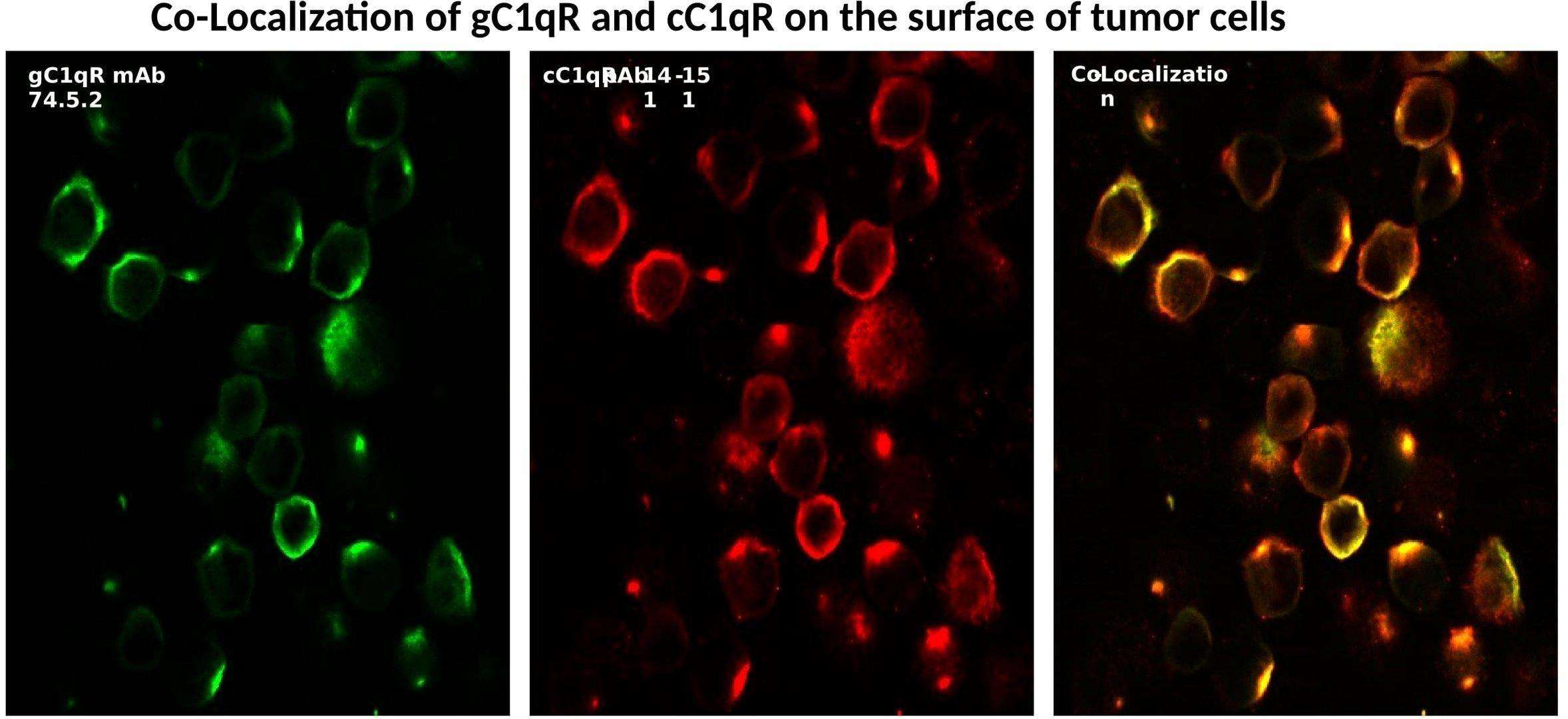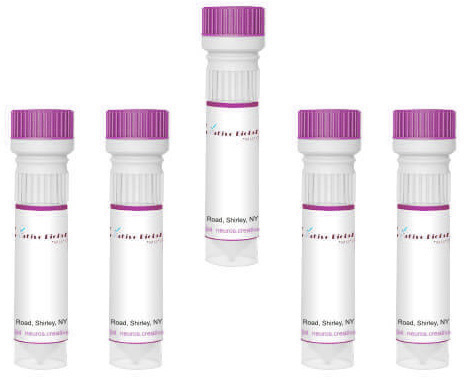Product List Background C1qR Functional Service
Background
Complement component 1 (C1) the first member of the classical complement pathway, is a protein complex composed of the subcomponents C1q, C1r, and C1s, among which C1q is essential to complement activation. In addition to its important role in the complement cascade, C1q is also involved in regulating a variety of cellular responses by binding to C1q receptors (C1q-Rs) and related proteins on the cell surface. Currently, several C1q-Rs have been identified, including cC1q-R, gC1q-R, C1q-Rp, complement receptor 1 (CR1), and C1qRO2-.
-
cC1q-R
cC1q-R, also known as calreticulin, is named for its interaction with the collagen-like tail of C1q. cC1q-R is a high-affinity multifunctional protein that localizes to the endoplasmic reticulum (ER) capable of binding to multiple ligands, such as C1q collagen-like tail, mannose-binding lectin, and surfactant proteins. The C1q binding site of cC1q-R is located at residues 160 – 283 between the N- and p-domains.
-
gC1q-R
gC1q-R, or named as p33, is a 33 kDa homotrimeric protein that binds to the globular head domain of C1q with high affinity. gC1q-R is widely expressed both intracellularly and on the cell surface, transmitting signals by interacting with a series of ligands, such as vitronectin, thrombin, fibrinogen, and other microbial or plasma proteins.
-
C1q-Rp
C1q-Rp, also known as CD93, is a novel C1 receptor that can specifically bind to the collagen-like domain of C1q, mediating C1q-dependent enhancement of cell phagocytic activity. C1q-Rp is a member of the C-Type lectin family with a C-type lectin-like domain at the N-terminus for carbohydrate recognition, a glycosylated mucin-like domain, several epidermal growth factor-like repeats, a transmembrane domain, and a short cytoplasmic tail. Compared with interaction with C1q, C1q-Rp is now considered to be more involved in cell adhesion, apoptotic cells, and host defense.
-
CR1 and C1qRO2-
CR1 is a recognized receptor for complement C3b and C4b, which also has been found to bind to the collagen-like tails of C1q. C1qRO2- is a putative receptor for C1q since C1q induced-superoxide production was shown to be independent of other receptors.
 Fig. 1 Expression of C1 and C1qRs by circulating blood monocytes.1
Fig. 1 Expression of C1 and C1qRs by circulating blood monocytes.1
C1qR Functional Service
Creative Biolabs provides an extensive array of C1qR-associated products, such as anti-C1qR antibodies, C1qR detection ELISA kits, and recombinant human C1qR protein. These meticulously engineered resources play a pivotal role in propelling research efforts focused on developing therapeutic approaches for numerous diseases.
 Fig.2 Co-localization and surface presence of gC1qR and cC1qR on breast cancer cells.2
Fig.2 Co-localization and surface presence of gC1qR and cC1qR on breast cancer cells.2
The complement system, including proteins such as C1q and its receptors cC1qR/CR and gC1qR/p33/HABP1, is increasingly recognized as a target for cancer therapy due to its overexpression in cancer cells. Researchers have found these elements influence tumor microenvironment inflammation, angiogenesis, metastasis, and cell proliferation. gC1qR, crucial in innate immune responses, co-localizes with cC1qR on cell surfaces and its soluble form, released by malignant cells, serves as a diagnostic marker. Furthermore, gC1qR’s presence in the extracellular matrix links it to cancer progression, with C1q interactions inhibiting T-cell activity akin to PD-L1/PD-1 interactions.
Creative Biolabs provides an array of bespoke services centered on C1qR, which encompass extensive interaction assessments and auxiliary functional options. These services are meticulously tailored to support esteemed clients in their scientific research and clinical pursuits.
References
-
Ghebrehiwet, Berhane, et al. "Monocyte expressed macromolecular C1 and C1q receptors as molecular sensors of danger: implications in SLE." Frontiers in Immunology 5 (2014): 278.
-
Ghebrehiwet, Berhane, et al. "The C1q and gC1qR axis as a novel checkpoint inhibitor in cancer." Frontiers in Immunology 15 (2024): 1351656. Distributed under Open Access license CC BY 4.0, without modification.


 Datasheet
Datasheet Fig. 1 Expression of C1 and C1qRs by circulating blood monocytes.1
Fig. 1 Expression of C1 and C1qRs by circulating blood monocytes.1
 Fig.2 Co-localization and surface presence of gC1qR and cC1qR on breast cancer cells.2
Fig.2 Co-localization and surface presence of gC1qR and cC1qR on breast cancer cells.2
